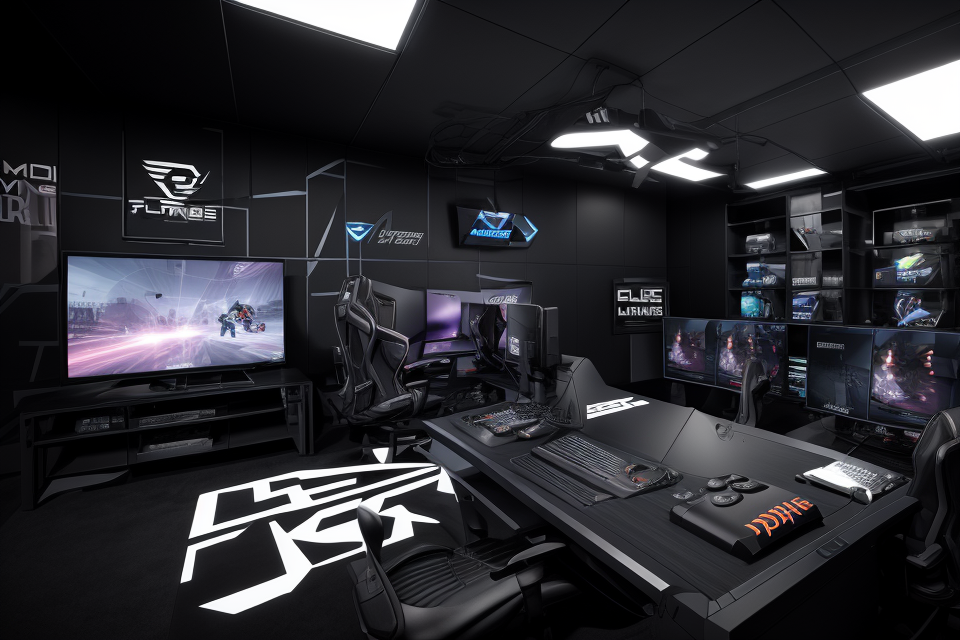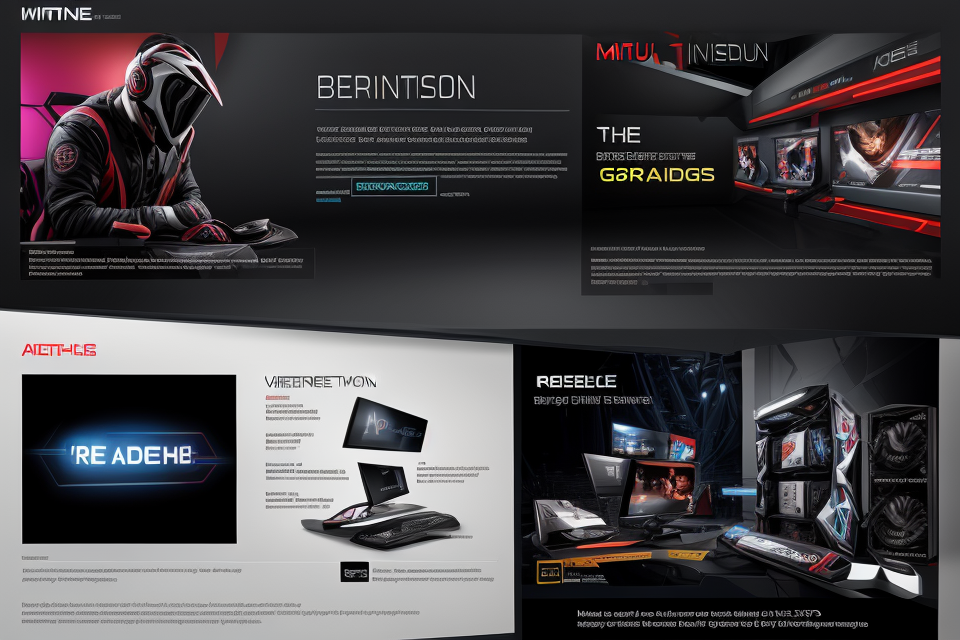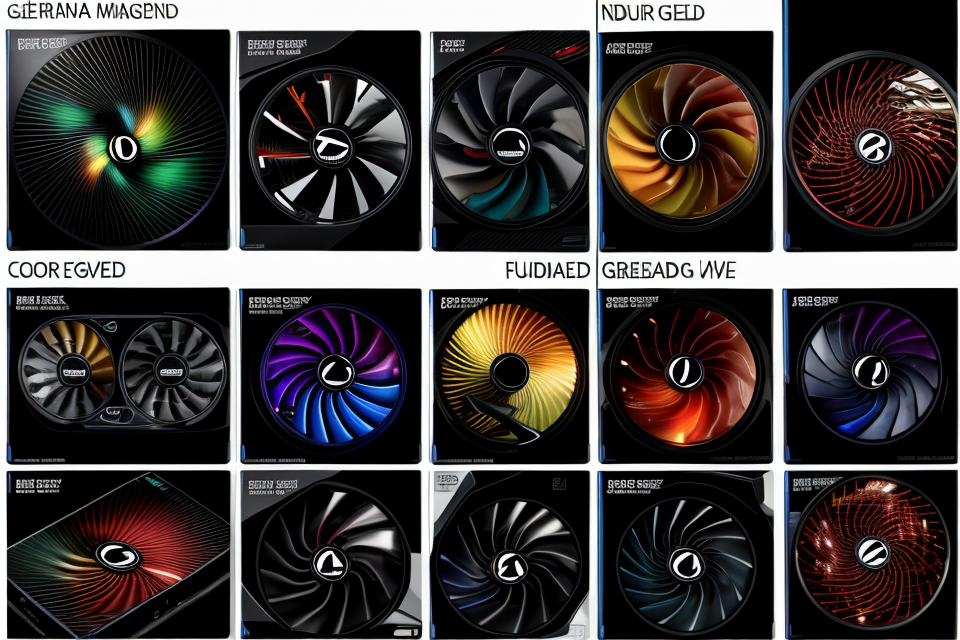
Are you ready to take your gaming experience to the next level? Do you want to immerse yourself in breathtaking visuals and stunning graphics? Then it’s time to upgrade your graphics card! A better graphics card doesn’t just mean higher frame rates and smoother gameplay; it also means more vivid colors, sharper details, and a more realistic gaming experience. But how exactly does a better graphics card affect visual fidelity? In this article, we’ll explore the intricacies of graphics cards and how they impact the visual quality of your games. So, buckle up and get ready to discover the amazing world of better graphics cards!
A better graphics card can significantly improve visual fidelity in a variety of ways. Firstly, it can render images and video at higher resolutions, resulting in sharper and more detailed visuals. Additionally, a better graphics card can handle more complex graphics and textures, resulting in more realistic and detailed environments and characters. Furthermore, a better graphics card can also increase the frame rate, which can make the visuals appear smoother and more fluid. Overall, a better graphics card can greatly enhance the visual experience of gaming and other graphics-intensive applications.
Understanding Graphics Cards
What is a graphics card?
A graphics card, also known as a video card or display card, is a hardware component designed to handle the processing and rendering of images and video on a computer. It is a specialized type of expansion card that is installed in the motherboard of a computer, and it is responsible for generating the visual output that is displayed on the screen.
The purpose of a graphics card is to offload the work of rendering images and video from the CPU, which can help improve the overall performance of the computer. The graphics card is designed to handle complex calculations related to the manipulation of pixels, textures, lighting, and other visual effects, which can be especially important for tasks such as gaming, video editing, and 3D modeling.
The quality of the graphics card can have a significant impact on the visual fidelity of the images and video that are generated by the computer. A better graphics card will typically have more processing power, which can allow for more detailed and complex visual effects to be rendered. This can result in smoother animation, more realistic lighting, and more vibrant colors, which can all contribute to a more immersive and visually appealing experience for the user.
Overall, the graphics card is a critical component of a computer’s visual output, and a better graphics card can greatly enhance the visual fidelity of the images and video that are generated by the computer.
Key components of a graphics card
A graphics card, also known as a display adapter or video card, is a hardware component that is responsible for rendering images and videos on a computer screen. It is a critical component in determining the visual quality of a computer’s output.
One of the key components of a graphics card is the GPU, or Graphics Processing Unit. This is the main processing unit responsible for rendering images and videos. The GPU is designed to handle complex mathematical calculations and can perform these calculations much faster than the CPU, or Central Processing Unit. This allows the GPU to handle the complex rendering tasks required to produce high-quality images and videos.
Another important component of a graphics card is the VRAM, or Video Random Access Memory. This is a type of memory that is specifically designed for storing and accessing video data. The VRAM is used to store the images and videos that are being rendered by the GPU, and it allows the GPU to access this data quickly and efficiently. This is important because it helps to ensure that the images and videos are rendered smoothly and without any lag or delay.
Finally, some graphics cards also include CUDA cores, or other parallel processing units. These units are designed to work in parallel with the GPU and can perform additional processing tasks, such as image enhancement and post-processing. This can help to improve the overall visual quality of the images and videos being rendered.
The Impact of a Better Graphics Card on Visual Fidelity
Improved frame rates and smooth gameplay
The performance of a graphics card is directly linked to the frame rates achieved during gameplay. Frame rates refer to the number of frames displayed per second, and a higher frame rate generally leads to smoother and more visually appealing gameplay. A better graphics card can significantly improve frame rates, resulting in a more immersive and responsive gaming experience.
Improved frame rates are crucial for achieving high levels of visual fidelity in games. When frame rates are low, the game appears choppy and less fluid, which can negatively impact the overall visual experience. This is because at lower frame rates, the images displayed on the screen may appear out of sync with the rest of the game, causing a stuttering effect. This stuttering can lead to motion blur and ghosting, which can affect the overall visual quality of the game.
Higher frame rates provide several benefits that contribute to a more visually appealing gameplay experience. Firstly, higher frame rates lead to smoother animations and more fluid motion, which can make the game feel more natural and responsive. This is particularly important in fast-paced games where split-second timing and precision are crucial. Additionally, higher frame rates can result in better lighting and more detailed textures, which can significantly enhance the overall visual quality of the game.
Furthermore, higher frame rates can also reduce the likelihood of graphical artifacts such as tearing and juddering. Tearing occurs when the image displayed on the screen is not aligned with the frame rate, resulting in a jagged or torn appearance. Juddering occurs when the image appears to shake or vibrate, which can be particularly noticeable during fast-moving scenes. Both of these artifacts can detract from the overall visual fidelity of the game and negatively impact the gaming experience.
In conclusion, a better graphics card can significantly improve frame rates and result in smoother and more visually appealing gameplay. Higher frame rates provide several benefits that contribute to a more immersive and responsive gaming experience, including smoother animations, better lighting, and more detailed textures. Additionally, higher frame rates can reduce the likelihood of graphical artifacts such as tearing and juddering, which can detract from the overall visual fidelity of the game.
Enhanced graphics and visuals
A better graphics card significantly impacts the visual fidelity of a game or application by providing improved graphics and visuals. Some of the key enhancements include:
- 4K resolution: A better graphics card enables the display of games and applications at a higher resolution, such as 4K, resulting in sharper and more detailed images. This is particularly important for players who have high-resolution displays or want to experience the most immersive gaming experience possible.
- Texture quality: Textures in games and applications can appear more realistic and detailed with a better graphics card. This is because a better graphics card can handle more complex and higher-quality textures, which can make objects and environments appear more lifelike.
- Anti-aliasing: Anti-aliasing is a technique used to smooth out jagged edges and improve the overall appearance of graphics. A better graphics card can enable higher-quality anti-aliasing, resulting in smoother and more visually appealing graphics.
- Shadows and lighting: Shadows and lighting are crucial components of a game’s or application’s visual fidelity. A better graphics card can handle more complex and realistic shadows and lighting effects, resulting in a more immersive and visually appealing experience. Additionally, a better graphics card can enable advanced lighting techniques, such as real-time global illumination, which can greatly enhance the overall visual quality of a game or application.
Reduced input lag and motion blur
A better graphics card can significantly impact the visual fidelity of a game or application by reducing input lag and motion blur.
Importance of low input lag
Input lag refers to the delay between a user’s input and the corresponding action on the screen. In gaming, a low input lag is crucial for a seamless and responsive gaming experience. A better graphics card can reduce input lag by offloading the processing workload from the CPU to the GPU, resulting in faster response times and more accurate inputs.
How graphics cards affect motion blur
Motion blur occurs when rapidly moving objects on the screen appear to be distorted or blurred. This can be caused by a variety of factors, including the frame rate of the game or application, the refresh rate of the monitor, and the performance of the graphics card. A better graphics card can help reduce motion blur by rendering frames more quickly and efficiently, resulting in a clearer and more stable image.
In summary, a better graphics card can improve visual fidelity by reducing input lag and motion blur, resulting in a more responsive and stable gaming experience.
Factors Affecting Visual Fidelity
Monitor and TV specifications
- Resolution:
- The number of pixels in a display, measured in width x height (e.g. 1920 x 1080).
- Higher resolutions result in sharper images and more detail.
- Graphics cards can handle higher resolutions, but performance may degrade at very high resolutions.
- Refresh rate:
- The number of times per second that a display refreshes its image.
- Measured in Hertz (Hz), higher refresh rates result in smoother motion and less blur.
- Graphics cards can handle higher refresh rates, but performance may degrade at very high refresh rates.
- Response time:
- The time it takes for a pixel to change color after a signal is received.
- Measured in milliseconds (ms), lower response times result in less motion blur and ghosting.
- Graphics cards can handle lower response times, but performance may degrade at very low response times.
In summary, the specifications of a monitor or TV can greatly affect the visual fidelity of a gaming experience. Higher resolutions, refresh rates, and response times result in sharper images, smoother motion, and less blur. A better graphics card can handle these higher specifications, resulting in a more immersive and visually stunning gaming experience.
Other hardware components
In addition to the graphics card, other hardware components can also impact visual fidelity. These components include the CPU (Central Processing Unit), RAM (Random Access Memory), and the motherboard and power supply.
- CPU (Central Processing Unit): The CPU is responsible for executing instructions and performing calculations. A more powerful CPU can help improve visual fidelity by allowing for smoother frame rates and faster load times. This can result in a more seamless and responsive gaming experience.
- RAM (Random Access Memory): RAM is used to temporarily store data that the CPU is actively using. Adequate RAM can help improve visual fidelity by ensuring that the CPU has access to the data it needs to render images and graphics. This can help reduce stuttering and lag, resulting in smoother visuals.
- Motherboard and power supply: The motherboard is the main circuit board of a computer, and it connects all the components together. A high-quality motherboard can help ensure that the graphics card and other components are able to communicate effectively and efficiently. The power supply provides the necessary power to all the components, including the graphics card. A stable and reliable power supply can help ensure that the graphics card is able to perform at its best, resulting in improved visual fidelity.
Making the Right Choice
Factors to consider when choosing a graphics card
When selecting a graphics card, several factors must be considered to ensure that the right choice is made. These factors include:
Budget
The budget is an essential factor to consider when choosing a graphics card. It is crucial to set a budget and stick to it to avoid overspending. However, it is important to note that the more expensive the graphics card, the better the performance and visual fidelity. Therefore, it is essential to weigh the benefits of a more expensive graphics card against the cost.
Compatibility with existing hardware
Another crucial factor to consider when choosing a graphics card is its compatibility with existing hardware. It is important to ensure that the graphics card is compatible with the motherboard, power supply unit (PSU), and the CPU. Additionally, it is crucial to check if the graphics card will fit in the computer case.
Future-proofing
Future-proofing is another critical factor to consider when choosing a graphics card. It is important to choose a graphics card that can handle the demands of the games and applications that will be used in the future. This is because upgrading a graphics card can be expensive and time-consuming. Therefore, it is crucial to choose a graphics card that can handle the demands of the future to avoid the need for an upgrade.
Overall, choosing the right graphics card requires careful consideration of several factors, including budget, compatibility with existing hardware, and future-proofing. By considering these factors, it is possible to choose a graphics card that will provide the best visual fidelity and performance for the intended use.
Popular graphics cards and their performance
When it comes to choosing the right graphics card for enhancing visual fidelity, there are several options available in the market. Three of the most popular graphics card series are the NVIDIA GeForce GTX and RTX series, AMD Radeon RX series, and Integrated Intel HD and Iris Xe graphics.
- NVIDIA GeForce GTX and RTX series:
- The NVIDIA GeForce GTX series has been a popular choice for gamers for many years. The GTX 1660 Ti, GTX 1660 Super, and GTX 1650 Super are some of the latest models in this series. These graphics cards offer excellent performance and are capable of running most games at high settings.
- The NVIDIA GeForce RTX series, on the other hand, is designed for enthusiasts and professional gamers. The RTX 3080, RTX 3070, and RTX 3060 Ti are some of the latest models in this series. These graphics cards offer even better performance than the GTX series and are capable of running games at ultra-high settings. They also have additional features such as real-time ray tracing and AI-powered upscaling.
- AMD Radeon RX series:
- The AMD Radeon RX series is another popular choice for gamers. The RX 6800 XT, RX 6700 XT, and RX 6600 XT are some of the latest models in this series. These graphics cards offer excellent performance and are capable of running most games at high settings.
- The AMD Radeon RX 6900 XT is one of the most powerful graphics cards in this series, offering top-of-the-line performance for enthusiasts and professional gamers. It is capable of running games at ultra-high settings and supports real-time ray tracing and AI-powered upscaling.
- Integrated Intel HD and Iris Xe graphics:
- For budget-conscious gamers, integrated graphics cards such as the Intel HD and Iris Xe graphics can be a good option. These graphics cards are built into the processor and do not require a separate graphics card. They offer decent performance for casual gaming and multimedia tasks.
- The Intel Iris Xe graphics are the latest integrated graphics cards from Intel, offering improved performance over the previous generation. They are capable of running most games at medium settings and offer decent performance for multimedia tasks.
In summary, when choosing a graphics card to enhance visual fidelity, it is important to consider the specific needs and budget of the user. The NVIDIA GeForce GTX and RTX series, AMD Radeon RX series, and Integrated Intel HD and Iris Xe graphics are all popular options with varying levels of performance and price points.
FAQs
1. How does a graphics card affect the visual quality of games and other graphics-intensive applications?
A better graphics card can significantly improve the visual quality of games and other graphics-intensive applications. This is because a graphics card is responsible for rendering images and video on a computer screen, and a higher-end graphics card can handle more complex graphics and textures, resulting in a more realistic and visually appealing image. Additionally, a better graphics card can handle higher resolutions and frame rates, resulting in a smoother and more fluid visual experience.
2. What are some of the key features of a better graphics card that contribute to improved visual fidelity?
A better graphics card typically has more video memory (VRAM), which allows it to handle more complex textures and scenes. It also has a higher number of processing cores, which allows it to render images and video more quickly and efficiently. Additionally, a better graphics card may have features such as support for higher resolutions, improved anti-aliasing, and faster frame rates, all of which contribute to improved visual fidelity.
3. How does the graphics card compare to other components in terms of impact on visual quality?
The graphics card is one of the most important components when it comes to the visual quality of games and other graphics-intensive applications. While other components such as the CPU and monitor can also affect visual quality, the graphics card is the primary component responsible for rendering images and video on the screen. A better graphics card will generally result in a more visually appealing and realistic image, while a lower-end graphics card may result in lower resolutions, frame rates, and visual quality.
4. Are there any downsides to using a better graphics card?
One downside to using a better graphics card is that it can be expensive, particularly for high-end models. Additionally, a better graphics card may require more power, which can lead to increased heat and noise levels in the computer. Finally, a better graphics card may not provide a significant improvement in visual quality for certain types of applications or games that are not graphics-intensive.


